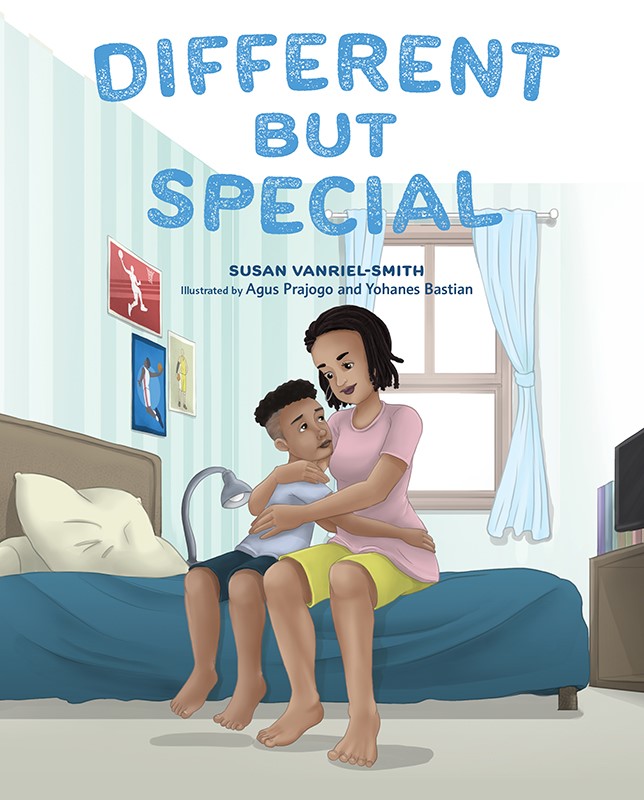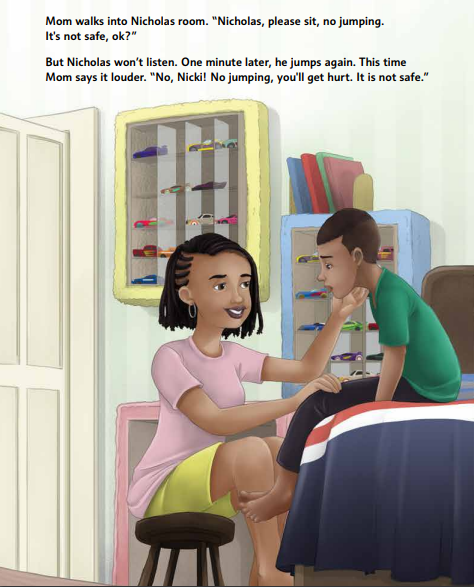Different But Special: A Mother’s Story

How does one use their creative voice? For some, it is in the way they dress, how they style their hair, maybe even their profession or field. It can be a form of expression, leisure or, for many, escapism.
For local author Susan Vanriel-Smith, she uses her creative voice as an outlet, one to tell a story – that of her journey as a mother of children on the autism spectrum.
Different But Special tells the story of Nicholas, who was diagnosed with autism, and his family, and it follows their journey as they learn to listen, talk and grow as a familial unit, “find[ing] ways to work through the moments though their love for one another and end up all the stronger for it.” It is a universal family story, Vanriel-Smith said, one that shows the good times and difficulties, times of celebration and times of reflection.
“The mission of my book is to reach families of all race[s] and culture[s],” Vanriel-Smith wrote. “There aren’t many books that discuss the topic of autism amongst an African American family. I wanted it to reach the Caribbean community, my culture. I wanted it to be authentic, transparent and relatable.”
Crafting a work that is purposefully transparent and revealing can be challenging, not just for authors such as Vanriel-Smith, but also for those who feel represented through the characters put on the page. However difficult, the exploration of these stories is crucial, Vanriel-Smith said, especially for its ability to combat misinformation or a lack of education.
“I was compelled to explore this mission because oftentimes, people are afraid [of an autism diagnosis]. They live in denial and do a complete disservice to their children,” Vanriel-Smith wrote. “The lack of education on the topic can cause individuals to shy away, leaving children undiagnosed, untreated…Parents are sometimes lost and confused, depressed and angry. I want them to know that they are not alone.”

While Different But Special can serve as a form of reassurance for parents of children with autism, it also serves as a form of visual representation for these children, especially for children of color. To see someone who looks or acts like themselves in a creative work can be a powerful reminder to children that not only are they seen and heard, but that their identity is needed and justified.

“April is Autism Awareness Month and I read to a few classrooms and was amazed at how interested the 5- and 6-year-olds were,” Vanriel-Smith said. “I hope to continue to be a voice for the nonverbal and continue to advocate for not only my children, but for everyone that [has autism]. We still have a lot of work to do.”
These closing words – “We still have a lot of work to do” – are words that ring painfully true for many marginalized communities. All too often, autism is portrayed in ways that often belittles or dehumanizes, regardless of intent. While the first step in the battle for equitable representation is simply, well, representing marginalized individuals in media, these persons must have a seat at the creative table to combat media-enforced stereotypes.
“The first type of representation is based on the idea that autism is a disease that needs to be cured. This idea is often perpetuated by stories about people with autism who are able to ‘overcome’ their condition and lead successful lives,” Here On The Spectrum wrote. “The second type of representation is based on the idea that people with autism have special abilities…This idea is often perpetuated by stories about people with autism who have… savant-like abilities.”
This sentiment, one of the continuous advocacy & work that is required for underrepresented or misrepresented communities, is one that has unfortunately failed to latch on with a majority of media creators, whether in written works, visual productions or other mediums. However, as cultural conversations have continued, whether in regard to individuals with autism, LGBTQ+ persons or other groups, so has the expectation of those creating previously misinformed media.
“It’s important to remember that every autistic person is different. There is no one-size-fits-all portal of autism in the media or in real life,” Here On The Spectrum continued. “To truly be representative of the autistic community, the media needs to show a more accurate and diverse range of people on the spectrum. This includes autistic adults, people of color with autism, and women with autism.”
As the scope of represented individuals in media continues to expand, so do those who create these individuals portrayed on the screen or page. If authentic representation is the ultimate end goal, how can this be achieved without having these communities as a part of the creative process? Simply put: it can’t be authentic if these groups don’t have a seat at the table.
“It is crucial to remember that the extensivity of the autism spectrum poses challenges for media representation…It is crucial for people on the spectrum themselves to be aptly included in the making of media content depicting autism, so representation is based on real, individualized experiences rather than stereotypes,” Rosanna Kataja of the Harvard Political Review wrote.
Vanriel-Smith’s Different But Special is a familial story of love, authenticity and representation, a universal story that crosses all cultural or social boundaries. It is an ever necessary reminder of our need to constantly grow and educate ourselves, as not only individuals, but as friends, families, and community members.
For further information on Different But Special, including links to purchase, please click here.
Like this article?
Leave a comment
About Author

James Costa is the Neighborhoods & Families Coordinator for the Department of Leisure, Family, and Recreation. He began working with the division during his sophomore year at Manchester High School, and he is now a UConn graduate with degrees in Journalism & Film Studies.
Fun Fact #1: I won my car in a raffle during Manchester High School’s Project Graduation.
Fun Fact #2: My all-time favorite movies are All That Heaven Allows, Punch-Drunk Love & Twin Peaks: The Return.
